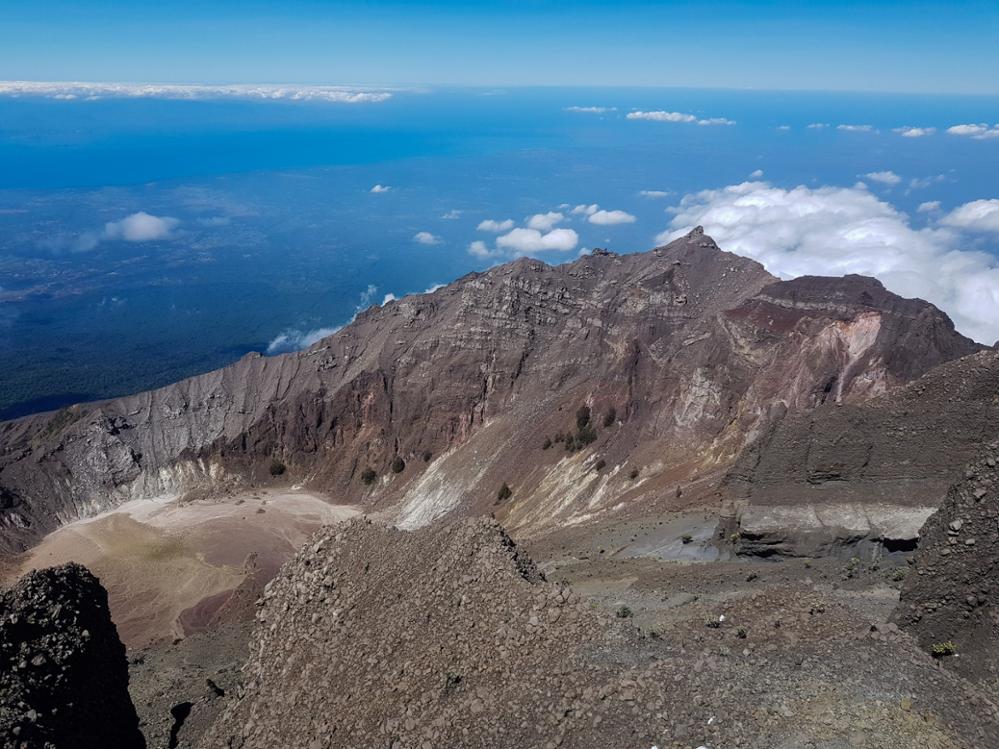
The Samalas volcano or the solved mystery of the phenomenal 13th century eruption
Azimuth Adventure Travel Ltd, in association with K-MerahProd (an audiovisual production company), regularly welcomes Western television crews, in order to assist them in the filming of documentaries on Indonesia, which remains a little-known destination, even if tourism is developing at breakneck speed.
In September 2019, we helped a team from Galaxie Presse to produce a documentary on the volcanoes of Indonesia, in which the history of the Samalas volcano is notably mentioned, following our suggestions during the preparation of the filming. This is therefore the opportunity for us to tell you more about this volcanic cone, whose name scientists did not yet know just 20 years ago!
400 volcanoes in Indonesia!
Indonesia is a well-known destination for volcano lovers. Around 400 fire mountains dot the archipelago, some of which, like Merapi, north of the city of Yogyakarta on the island of Java, are among the most active and closely monitored on the planet (127 volcanoes are currently considered to be active in Indonesia).
This is because the archipelago has been the scene of phenomenal eruptions with global repercussions more than once over the last millennium. The most recent are the well-documented ones: the eruptions of Krakatoa in 1883 and that of Tambora a few decades earlier, in 1815.
1257, year of one of the largest eruptions of all time
As early as the 1970s, volcanologists, climatologists and glaciologists around the world were certain that a large-scale eruption had taken place in the year 1257. The analysis of ice cores taken in the Arctic and Antarctica led specialists consider the eruption to have been eight times more powerful than that of Krakatoa, and twice as important as that of Tambora, without however managing to locate the person responsible for such a cataclysm.
European chronicles of the period, such as that written by Brother Richer, a Benedictine monk in the Vosges, report a constantly cloudy sky for several months, a sudden drop in temperatures and a year without summer, during where the harvests were particularly bad.
In London, the discovery of giant mass graves confirmed the existence of an unprecedented famine. In this city alone, 15,000 people died the year following the explosion, or a third of the inhabitants.
The mystery finally clarified
It was only in 2003 that an international team of researchers coordinated by the Physical Geography Laboratory in Meudon shed light on the mystery of the most important eruption of the last seven millennia: by combining data from different fields. and of varied nature (deposit distribution maps, 3D reconstruction of the ancient collapsed volcano, volume and mass flow of the eruption, comparison of the composition of the vitreous particles in the ashes of the volcano with those of the vitreous particles found in polar ice and historical documents), the team succeeded in identifying the Samalas volcano, located on the island of Lombok, as responsible for this gigantic eruption. The name of the volcano was revealed by a chronicle of the time written in ancient Javanese (Babad Lombok), reporting a phenomenal eruption that year. The scriptures describe incessant earthquakes lasting a week, landslides on the slopes of the Rinjani volcano and the collapse of the Samalas volcano, as well as scenes of panic and the flight of inhabitants to more distant areas.
In 2017, an article published in the British scientific journal Nature Geoscience, however, contributed to putting the impact of the eruption on the climate changes of the time into perspective: the study of historical documents from the time would have made it possible to demonstrate that “ the Little Ice Age” would have in fact preceded the eruption, which only aggravated the existing crisis without being the main factor.
Still, somewhere in the Rinjani volcanic complex, the town of Pamatan, the former capital of the Kingdom of Lombok buried at the time of the eruption, is waiting to be reborn from its ashes...

